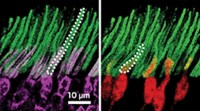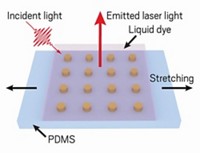Advertisement
Grab your lab coat. Let's get started
Welcome!
Welcome!
Create an account below to get 6 C&EN articles per month, receive newsletters and more - all free.
It seems this is your first time logging in online. Please enter the following information to continue.
As an ACS member you automatically get access to this site. All we need is few more details to create your reading experience.
Not you? Sign in with a different account.
Not you? Sign in with a different account.
ERROR 1
ERROR 1
ERROR 2
ERROR 2
ERROR 2
ERROR 2
ERROR 2
Password and Confirm password must match.
If you have an ACS member number, please enter it here so we can link this account to your membership. (optional)
ERROR 2
ACS values your privacy. By submitting your information, you are gaining access to C&EN and subscribing to our weekly newsletter. We use the information you provide to make your reading experience better, and we will never sell your data to third party members.
Analytical Chemistry
Lanthanide-Based Nanoparticles Could Measure Temperatures Inside Tissue
Medical Diagnostics: Particles injected into patients could help doctors detect tumors or sites of infection
by Tim Wogan
February 1, 2013
Scientists think nanoscale thermometers could measure the temperature of micrometer-sized patches of tissue inside the body, helping doctors pinpoint nasty infections or even cancer. Now researchers report lanthanide-based nanoparticles that can report temperatures of their surroundings within 2 ºC, potentially centimeters deep into tissue (ACS Nano, DOI: 10.1021/nn304373q).
Tumors and infected tissue are hotter than surrounding tissue because these cells run at a higher metabolic rate, burning more energy at a given time. To detect these hot spots, scientists in the past several years have designed fluorescent nanoparticles that doctors could inject into patients. Like other fluorescent materials, when excited by one wavelength of light, these particles emit other wavelengths. But unlike most other fluorescent substances, these materials change the light they emit as their surrounding temperature varies. By analyzing the spectrum of the light coming from the nanoparticles, doctors could determine the tissue’s temperature.
To produce easy to read signals while sitting in tissue, these particles must absorb and emit infrared light, which can penetrate easily through tissue. Many previously reported nanothermometers could absorb infrared light but couldn’t emit it.
Daniel Jaque of Autonomous University of Madrid and his colleagues developed particles that could do both. They synthesized 35-nm-diameter particles with a lanthanum fluoride shell surrounding a core of neodymium-doped lanthanum fluoride. Previous work on neodymium-containing particles suggested that the lanthanide could emit photons in the infrared range.
To test the particles’ ability to measure temperatures, the researchers placed the nanomaterials in water and excited them with an infrared laser. The nanoparticles emitted photons at two infrared wavelengths. As the team heated the water, they found that the intensities and exact wavelengths of the emitted photons changed slightly. Based on these changes, the scientists could work out the water temperature to within 2 ºC.
To determine how well the particles could produce a detectable signal when covered by tissue, Jaque’s group placed the nanoparticles under a dye-containing agar gel that simulated the optical properties of human tissue. The neodymium particles could produce detectable signals under 2 mm of gel. But Jaque says that, with other imaging techniques, the team potentially could detect light emitted by the particles centimeters beneath tissue surfaces.
The team next plans to test the nanoparticles in mice to determine how deep the materials can report temperatures and if the materials are toxic.
Fiorenzo Vetrone, of the National Institute of Scientific Research, in Varennes, Quebec, is intrigued by the work and says that one key to these nanothermometers is that, unlike previous ones, the neodymium particles need to absorb only one photon to get excited, instead of two. As a result, these new particles require less intense light to report temperatures than the previous nanothermometers do, allowing them to sense temperature deeper in tissue.




Join the conversation
Contact the reporter
Submit a Letter to the Editor for publication
Engage with us on Twitter